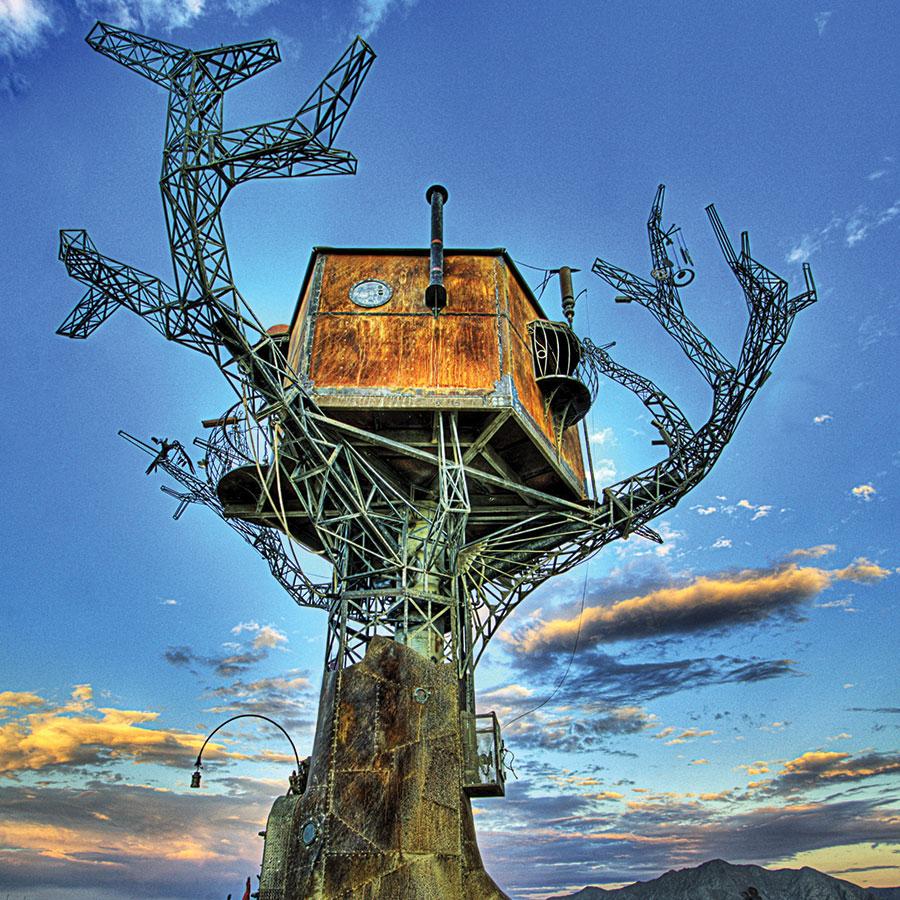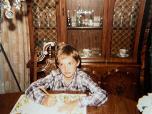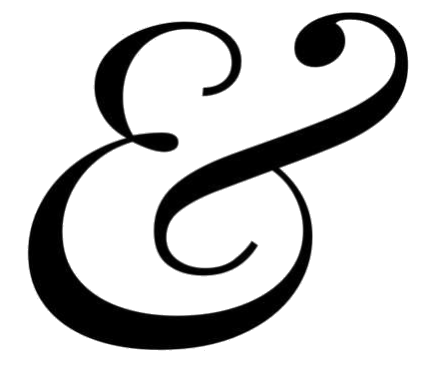Et Sequitur Magazine, Issue 6

Issue 6 (March 2023)
Formal Objection to the Repeal of Ordinance 162, subsection 3A of the Arthurian Estates Home Owners Association Agreement
By Kevin P. Keating
Esteemed committee members,
After hearing previous testimonials, it’s clear that Pullman was a man of unimpeachable integrity. For ten years, he served as president of our homeowner’s association. We always trusted his judgment, but you can certainly appreciate why we began having doubts. On a soggy May morning a year ago, without notifying the board or calling a meeting, Pullman hired a surveyor to mark his property line. Two days later, he hired a landscaping crew to remove from his backyard all of the shrubs and decorative dogwoods that were then in full flower. That weekend he rented a backhoe and paid a union operator to grade the yard and create a gentle slope around the white oak behind his house. This task completed, he had hundreds of feet of lumber delivered and neatly stacked behind the house. In the evenings, while walking our Labradoodles and Wire-Haired Griffins around the block, we spied Pullman wandering among the wooden pyramids like some suburban pharaoh contemplating the prospect of his embalmment. He made no mystery of his intentions. Last summer, he’d promised his two boys he’d build them a tree fort, and now he was making good on that promise.
After last year’s frightening winter, with its record-setting polar vortex and deadly highway pileup just two miles from Arthurian Estates, Pullman understandably took an extended leave of absence from his law practice and impulsively enrolled in classes at the community college. Without any irony in this voice, he explained that he was earning his associate’s degree in mechanical drawing and carpentry. By springtime, when the work crews arrived with their skid steer loads and excavators, he’d become proficient with a hammer and nails and had even developed a talent for woodcarving. As the seasons wheeled back to summer, he invested in a circular saw, a smoothing plane, a sander, and a power drill. In the pocket of his flannel shirt, he kept a notepad and pencil, and on a leather belt hanging loosely from his hips, he carried a trusty tape measure. Seldom taking time to eat a proper meal, he labored day and night in his backyard so that, by the end of May, the treehouse was beginning to take shape.
Of his wife and two small boys, Pullman never uttered a word.
While no one would describe him as a nature lover, he adored and took great pride in that oak. In the new lambskin wallet his wife had intended to give him as a Christmas gift (found buried in the back of her dresser drawer after the flower arrangements had wilted and the petals had fallen on his unswept floors; after friends and family had ceased coming to the house to bring him food and lament the condition of the icy roads and the ferociousness of the polar vortex), he kept a grainy black and white aerial photo of a vineyard taken decades ago, before developers bulldozed the trellises to make room for our subdivision’s grillwork of streets and sewers. In the distance, at the edge of a meadow, there was a lonely farmhouse and a couple of spotted horses tethered to a post. The most prominent object in the photo was the white oak, Pullman’s oak, its branches reaching up like a hand to a painfully overexposed sky. In our neighborhood of decorative poplars and persimmons, the oak was the tallest tree around. It was certainly the oldest, gazing over forests and fields for at least two centuries. It now seemed to keep watch over our peaceful streets, and we mistakenly believed it could shield us from the tragedies we read about in newspapers.
The tree's flowing limbs, now encased in rectangles of rough-hewn wood, creaked and groaned during strong summer storms. From the safety of our kitchens and living rooms, we waited for Pullman, scurrying like a squirrel through the labyrinth of tiny makeshift compartments, to come tumbling to earth. Though the work of an obvious apprentice, his carpentry proved surprisingly resilient to the forces of nature. By July, the oak had vanished beneath an exoskeleton of plywood and 2x4s. It looked more like a dystopian high-rise than anything we might call a tree. By early August, Pullman occupied its bird-infested warren of rooms. As far as we could tell, he no longer entered his home. To bathe, he used a garden hose and stood naked under the icy spray of water; to catch the ballgames on TV, he ran an orange electric cord to one of the rooms; and to prepare his meals, he made do with the coal-burning grill on his patio. Warding away the robins and sparrows proved difficult, and on the window ledges, he placed plastic owls and rubber snakes. At night, through the rustling leaves, we saw a blaze of candlelight.
During the final days of summer, on the highest roof, Pullman, a staunch secularist who’d renounced the faith of his fathers, started building a conical spire, one that made the treehouse look like a contorted countryside chapel. Only then did we decide the time had come to take action. As you’re well aware, Arthurian Estates has strict codes against constructing religious shrines and temples. During our monthly meeting, we drafted a new amendment to our charter, retroactively forbidding treehouses as well as religious structures. Yes, as some of you will no doubt claim, this may have been an egregious case of bureaucratic overreach, but we felt it the most diplomatic way to deal with this delicate matter. Technically speaking, because the president wasn’t in attendance that night, we couldn’t bring the amendment to the clubhouse floor for a simple up or down vote. But in emergency situations (dam failures, train derailments, limnic eruptions, temporary mental crackups) a plurality of homeowners can take matters into their own hands.
The measure passed without a single dissenting vote. We adjourned the meeting, wondering who would break the news to Pullman, but when we returned to our homes, we were startled to find handwritten invitations in our mailboxes. Pullman wanted to host a Labor Day barbecue in his backyard.
Compared to Parsifal Meadows across town, the lots in our community are small, the houses crammed together in uncertain suburban solidarity, but Pullman’s lot extended nearly an acre until it reached the ravine, large enough to accommodate the one hundred guests who mingled between tents and tiki torches. Pullman had draped the treehouse in festive twinkling lights and encouraged us to take self-guided tours through the funhouse confusion of rooms. Those of us who could manage it eagerly climbed the ladder and entered through the tight, splintered hole at the bottom.
Painted in vibrant summer colors—periwinkle, persimmon, pomegranate—the claustrophobic interiors served practical functions. On the lower level, for example, we found a laundry room with a galvanized steel tub and retractable clothesline, a storage room stocked with canned goods and mason jars, and a kitchenette complete with a varnished board and old crate that served as table and chair. Higher up, he’d constructed a game room with shelves on which he’d stacked his sons’ favorite board games. There was even a library with boxes of moldering magazines and paperbacks. There was no way to keep out the rain or stop the annoying drips after the clouds had parted. In one of the upper-level rooms, where there was a break in the canopy, he’d built an observatory decorated with sky charts and movie posters. We found two sleeping bags on the floor and next to the window, mounted on a tripod, a new Pluto GalaxyProbe II 76mm telescope. One by one, we climbed the ladders. Higher and higher we went until we reached the uppermost room with its strange conical spire twisting through the treetop. It took a moment for our eyes to adjust to the flickering candlelight, and more than a few of us gasped when we saw how Pullman had carved into the tree the faces of his wife and sons. Muttering excuses, some guests hurried back to the ground and abruptly left the party.
Luckily, no one was inside the treehouse when the fire started sometime after midnight. By then, the remaining guests were getting pretty rowdy, and Pullman, still commandeering the grill and sipping from a bottomless jug of whisky, squirted lighter fluid on the glowing coals. We tried to warn him, but he laughed quietly to himself and shook his head. Under his breath, he uttered a curse or incantation and then sprayed more fluid on the grill. He stumbled from the violent whoosh of flames but made no attempt to douse the fire, not that the garden hose would have done him much good. Even when the popping embers floated through the windows and ignited the wood planks like cheap kindling, he seemed more concerned about his incinerated brats and burgers.
Sparks rained down the roof and drainpipes of his abandoned legal residence. A family of chipmunks darted from beneath a pile of scrap wood and raced across a telephone line. The fire soon reached a transformer near the top of a nearby telephone pole. The neighborhood lights flickered, and then the streets went dark. The fire spread so quickly that we had to drag Pullman from the backyard and keep him from racing into the flames. On the street corner, we marveled as the oak blazed like a torch in the starry night. Two engines arrived just as the heaviest tree limbs exploded, and the outer walls toppled end over end, crashing against the roof of Pullman’s glassed-in three-season reason. The firefighters unrolled hoses and attached them to hydrants, but by then, the fire was burning with such intensity that the vinyl siding melted and peeled away from his home. Somehow the firefighters minimized the damage to adjacent properties, but by dawn, the Pullman residence was reduced to a shell of smoldering beams and posts. Behind it, the limbless oak towered like a black monolith.
Those who stayed until morning spoke of insurance policies and the likelihood of civil lawsuits. More than a few of us remarked how the handsome reporter from the evening news was much shorter in person. We talked about a dozen topics so long as we made no mention of our complicity in Pullman's breakdown, we who understood his anguish but lacked the courage to intervene and offer our friendship and support.
Pullman’s house is long gone, as is Pullman. Where he went, no one can say for sure. He has no other family here in town. Maybe he has relations elsewhere, far away at the edge of some western desert or on a storm-battered barrier island. But before vanishing, he taped to the clubhouse door the old black and white photo of the oak in the meadow just beyond the vineyard, its faded image like something out of a dream. Could there really have been wide open spaces in a community that now feels so confining, so confused?
The picture remained on the meeting room wall until last month when it went missing during a contentious debate with a cohort of new residents, many of whom are unaware of the tree’s significance. But we are not here to level accusations at the young homeowners. No, we are here, united as one voice, to object to their motion to repeal the ordinance against building tree houses and their proposal to use Pullman’s vacant parcel as a public park with swings and a jungle gym. For those of us who lay awake late at night and listen to Pullman’s distant hammering, the lot is hallowed ground.
Before forging ahead with your plans, we hope you give this matter the serious consideration it deserves. You see, we fear our president may one day return from his uncertain quest only to find that a construction crew has disturbed the trio of tempered faces buried beneath a layer of charcoal and ash.
~~~
We the undersigned enter the preceding statement into the record to be reviewed by all members, declaring that it constitutes an opinion and interpretation of the events discussed therein, and that it shall be posted continuously for no less than 72 hours on the Arthurian Estate clubhouse bulletin board.
Share this story on Twitter
After working as a boilermaker in the steel mills in Ohio, Kevin P. Keating became a professor of English and began teaching at John Carroll University, Baldwin Wallace University, and Cleveland State University. His essays and stories have appeared in over fifty literary journals. His first novel The Natural Order of Things was a finalist for the 2012 Los Angeles Times First Fiction Award. His second novel The Captive Condition was launched at the 2015 San Diego Comic Con. He is the recipient of the Cleveland Arts Prize and a Creative Workforce Fellowship.

© Copyright Et Sequitur Magazine
